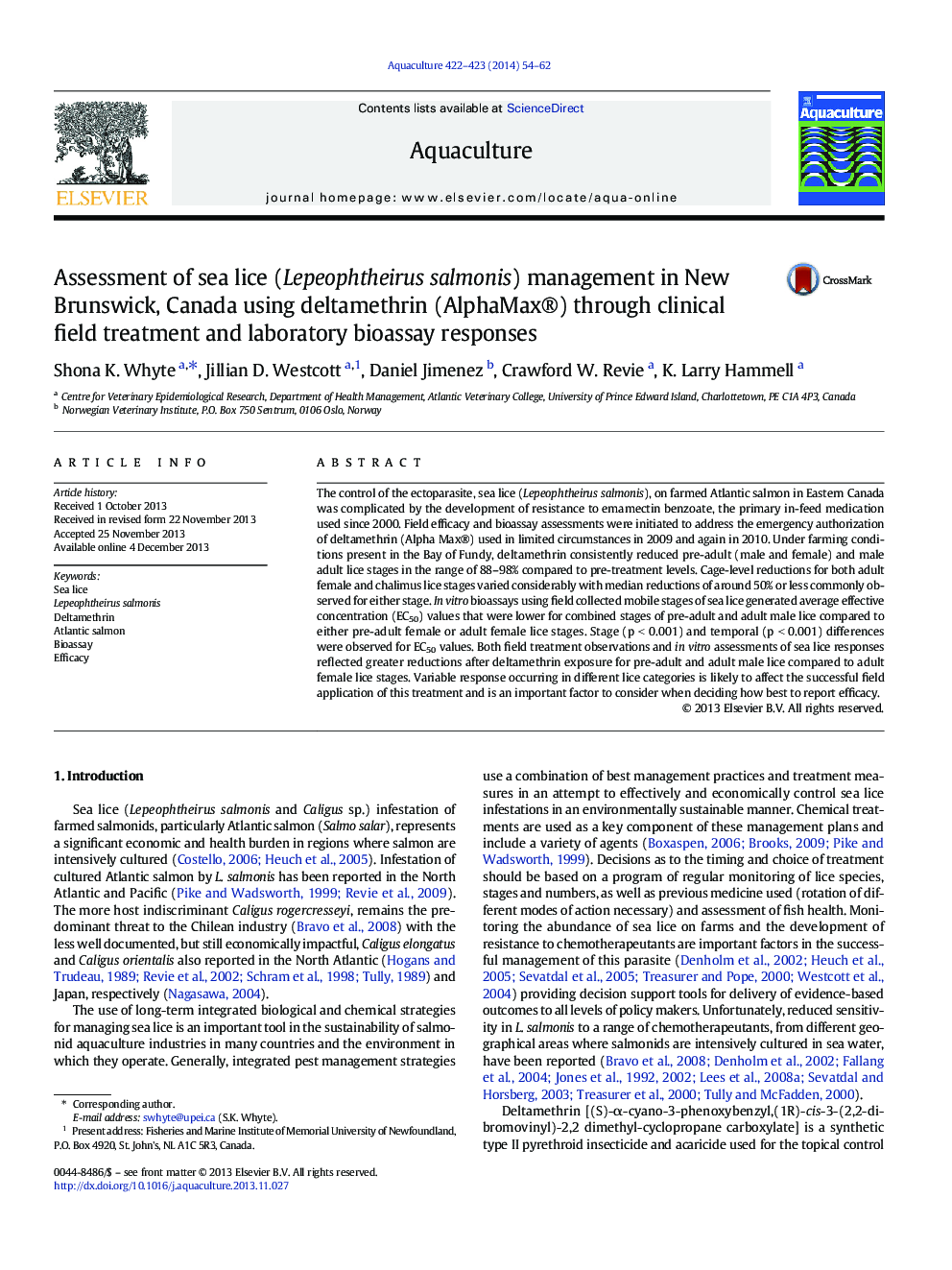| Article ID | Journal | Published Year | Pages | File Type |
|---|---|---|---|---|
| 2421930 | Aquaculture | 2014 | 9 Pages |
•Deltamethrin reduced more pre-adult and adult male lice than adult female lice.•Adult females were reduced by ≤ 50%; pre-adults and adult male lice by 88–98%.•Male EC50 values were lower than female EC50 values.•This variable response could affect field successful applications of deltamethrin.
The control of the ectoparasite, sea lice (Lepeophtheirus salmonis), on farmed Atlantic salmon in Eastern Canada was complicated by the development of resistance to emamectin benzoate, the primary in-feed medication used since 2000. Field efficacy and bioassay assessments were initiated to address the emergency authorization of deltamethrin (Alpha Max®) used in limited circumstances in 2009 and again in 2010. Under farming conditions present in the Bay of Fundy, deltamethrin consistently reduced pre-adult (male and female) and male adult lice stages in the range of 88–98% compared to pre-treatment levels. Cage-level reductions for both adult female and chalimus lice stages varied considerably with median reductions of around 50% or less commonly observed for either stage. In vitro bioassays using field collected mobile stages of sea lice generated average effective concentration (EC50) values that were lower for combined stages of pre-adult and adult male lice compared to either pre-adult female or adult female lice stages. Stage (p < 0.001) and temporal (p < 0.001) differences were observed for EC50 values. Both field treatment observations and in vitro assessments of sea lice responses reflected greater reductions after deltamethrin exposure for pre-adult and adult male lice compared to adult female lice stages. Variable response occurring in different lice categories is likely to affect the successful field application of this treatment and is an important factor to consider when deciding how best to report efficacy.
